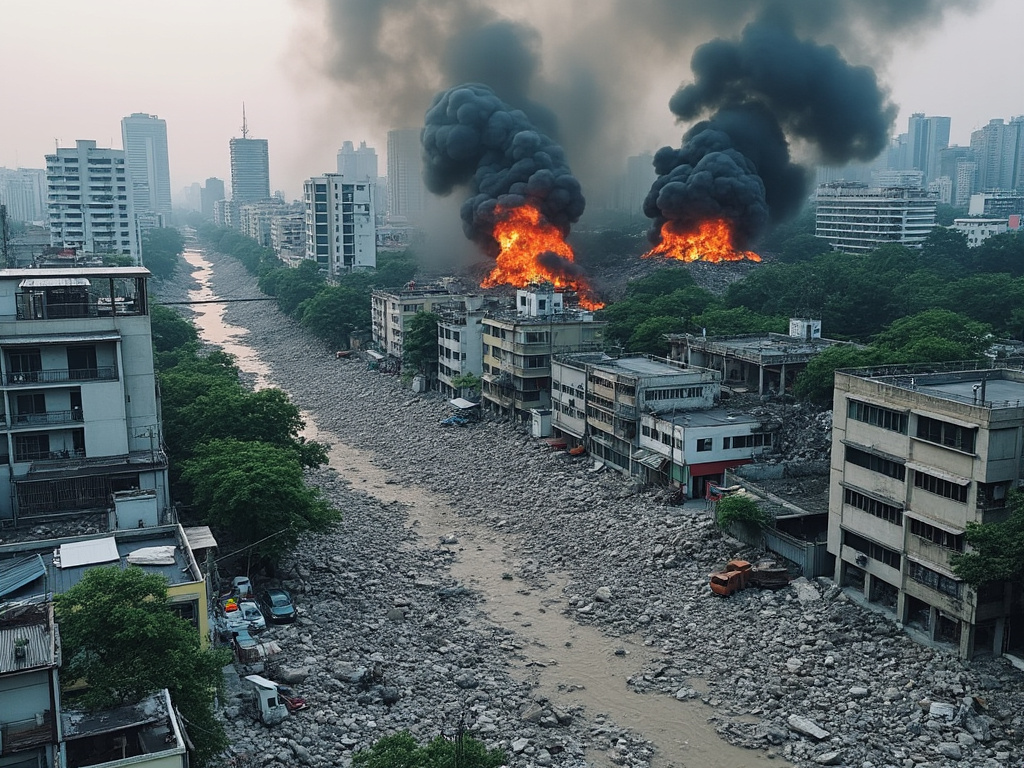
A massive earthquake and subsequent aftershocks have caused widespread devastation, leaving thousands in dire need of assistance.
Rescue operations in Myanmar are entering their third day following a powerful earthquake that struck on Friday, resulting in a rising death toll of 1,644 individuals within Myanmar and 17 fatalities reported in Thailand.
The epicenter of the 7.7-magnitude quake was located near the central cities of Mandalay and Sagaing, areas heavily impacted by the seismic activity, which was followed by a significant 6.4-magnitude aftershock shortly thereafter.
Residents in the affected regions have voiced concerns over the lack of immediate aid, expressing feelings of isolation as they work tirelessly to rescue trapped individuals.
Key infrastructure, including roads, airports, and bridges, has sustained extensive damage, hindering the ability of rescue teams to mobilize quickly and deliver essential supplies.
Volunteers and local authorities are engaged in urgent efforts to remove rubble, using basic tools such as shovels and their hands to search for survivors beneath the collapsed structures.
Amidst the grim circumstances, there are occasional moments of hope; for instance, a woman was rescued from under debris after enduring over 30 hours trapped in a collapsed building in Mandalay.
However, the prevailing mood is one of despair as families grapple with their losses.
Many personal tragedies have emerged, including heart-wrenching scenarios such as a son holding his dying mother’s hand while she remained trapped under rubble, and entire classes of young students, including monks taking part in a liturgy exam, believed to have been entombed beneath a fallen structure.
As the days advance, concerns mount regarding the fate of countless individuals still unaccounted for and potentially buried under the remains of their homes and businesses.
The international community is monitoring the situation closely as the humanitarian crisis unfolds in the wake of this natural disaster.
The epicenter of the 7.7-magnitude quake was located near the central cities of Mandalay and Sagaing, areas heavily impacted by the seismic activity, which was followed by a significant 6.4-magnitude aftershock shortly thereafter.
Residents in the affected regions have voiced concerns over the lack of immediate aid, expressing feelings of isolation as they work tirelessly to rescue trapped individuals.
Key infrastructure, including roads, airports, and bridges, has sustained extensive damage, hindering the ability of rescue teams to mobilize quickly and deliver essential supplies.
Volunteers and local authorities are engaged in urgent efforts to remove rubble, using basic tools such as shovels and their hands to search for survivors beneath the collapsed structures.
Amidst the grim circumstances, there are occasional moments of hope; for instance, a woman was rescued from under debris after enduring over 30 hours trapped in a collapsed building in Mandalay.
However, the prevailing mood is one of despair as families grapple with their losses.
Many personal tragedies have emerged, including heart-wrenching scenarios such as a son holding his dying mother’s hand while she remained trapped under rubble, and entire classes of young students, including monks taking part in a liturgy exam, believed to have been entombed beneath a fallen structure.
As the days advance, concerns mount regarding the fate of countless individuals still unaccounted for and potentially buried under the remains of their homes and businesses.
The international community is monitoring the situation closely as the humanitarian crisis unfolds in the wake of this natural disaster.




































